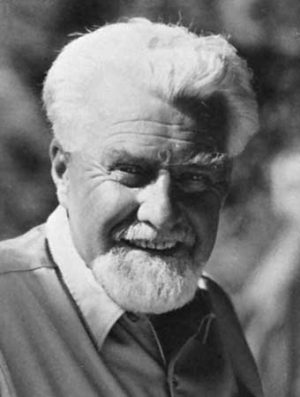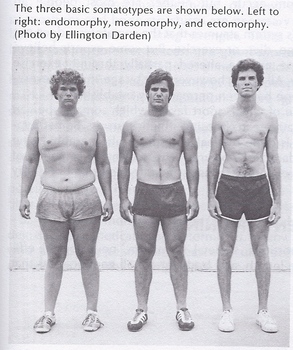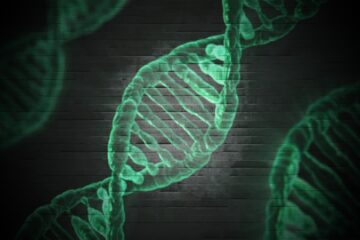Who Remembers William Sheldon?
Some words about an ingenious social scientist whose work was pigeonholed in his own lifetime
ONE OF THE victims of the Open Conspiracy was an unrequited admirer of the species named W.H. Sheldon (pictured), the inventor of the somatotype and the man who divided all human kind into ectomorphs, endomorphs, or mesomorphs. Sheldon was perhaps the hardest-working, best-disciplined, and well-tempered psychologist of his generation, a great teacher and man of inspired insight. He and his followers were perceived to be a threat to the intellectual prestidigitation by which Dobzhansky and the students of Boas were able to make heredity and race disappear before the very eyes of contemporary Americans. It is hard perhaps to remember how close they came to carrying this improbable stunt off. Several developments independent of Sheldon have since served to make the importance of human heredity reappear. One such development was the discovery that human chromosomes could by a special process be made plainly visible under the microscope, and several human conditions clearly linked to visible chromosomal aberrations. For instance, tri-X females, XX-Y males, XO females and the like were quickly revealed to be alive and well among us, with their attendant aberrations of body and mind. It was noted, however, that nowhere to be found was the YY male. The absence was puzzling until a British investigator got permission to study the inmates of maximum security prisons. Here she uncovered an amazing seven percent of YY males. Their absence in the general population was now understandable. Their criminal behavior was so rampant the police could hardly avoid arresting them.
The strange personality pattern of the YY “supermale” finally became news, and the public was exposed to a feast of nature-over-nurture, when the mass murderer Speck appeared in Chicago and the edgy, mesomorphic, acne-scarred, low-IQ prototype of the supermale was reported fully in the newspapers, together with his homosexual history and fatal compulsion to kill females with whom he had intercourse. (The nation was treated to the spectacle of the courts and prosecution fighting to prevent Speck’s chromosome condition from being presented as evidence because it might set him free to kill again, if he were able to prove he was not responsible for his action by virtue of his genetic constitution.)
Even more of a jolt to the Inquisition was the new science of ethology developed by Konrad Lorenz, the German Dr. Doolittle who learned how to talk with the animals. Though Lorenz was careful not to say anything to offend the High Inquisitors, the implications of his work were so obvious that ex-playwrights and journalists such as Ardrey and Tiger have made a career popularizing them. According to Lorenz, every facet of human behavior is inherited as neural synapses of “instincts” traceable to lower life forms. The human brain is simply a superbundle of them with more sophisticated switches and shunts, the overall effect being to create the illusion of thought, and also of free will. The impact of human chromosomal studies and ethology has been to knock down the theological Cartesian mind-body dichotomy on which the Dobzhansky anti-racial biology is based, with the result that some bright young men (and some brave old ones) began to rebel and write and teach against the Establishment. Long before Jensen and Shockley, however, Sheldon was electrifying all who could listen with a similar message. To the consternation of the New Inquisition, his studies demonstrated that human physique and behavior, and hence culture, are but two sides of the same coin.

One of the problems in taxonomy is the difference between wild and domesticated species. The latter, which may include man, are so variable that classification bogs down. Taxonomists find the wild species easy, the others they try to ignore. Compare, for example, the wolf and the dog. Establishment anthropologists like to infer that it is all right to study “wolves” (savages), but unscientific to study “dogs” (us), unless one limits the study entirely to traits on which natural selection has no direct effect.
A woman does not ask for her bridegroom’s fingerprints, blood group or cephalic index before saying yes. Yet these factors do correlate with race, so that ratios of whorl/loop, ABO, brachy/dolichocephaly, when mapped, show the racial distribution of man. But since the correlations are low, the subject is held at arm’s length and may be destructively “analyzed” by pointing to pockets of similar traits in Europe and Africa, the lack of “purity” and so on. We all were exposed to this game in school. It is part of the disappearing act and is all we get on the subject of race in the popular textbooks.
There is an inquisitorial resistance to any effort directed towards an objective survey and record of who we are. We might as well be living in Ptolemy’s day for all the good our anthropological proficiency does us. The human species is held under a blanket of ignorance, as though such biological knowledge was located in some inaccessible terra incognita.
Sheldon was the Captain Cook of this unknown land, exploring it photographically with a standardized procedure. The somatotype photograph shows simultaneously the front, side, and back of a well-lighted, unshadowed and unclothed individual standing “at attention” with arms and hands extended downwards. Before the photograph is taken the subject is interviewed in a carefully standardized way and the answers tabulated on a card. Hundreds of variables are thus presented in a manageable form for the human hand-eye-brain complex to measure, sort out, and classify with respect to other variables such as personality traits, medical or mental history, race, athletic ability, financial success, leadership, longevity, philosophical inclination, academic prowess, and many more — all of them traits upon which natural selection acts directly.
Sheldon’s first task was to correlate numerous personality traits with polar ranges of height/weight and “trunk index” expressed in three-digit form (1-7-1 is an extreme mesomorph, 4-4-4 midrange body-build). These somatotypes can be plotted on a triangle with 7-1-1, 1-7-1 and 1-1-7 at the respective endomorphic, mesomorphic, and ectomorphic poles. Such plots enable one to study the anthropometry of whole populations, to make a meaningful record of what such populations actually consist of at a particular time, and to trace changes in the internal physical and temperamental balance of nations and localities. At one stroke Sheldon invented a new psychology, a new way to interpret history, while turning up a wealth of new findings in psychiatry, delinquency, criminality, and constitutional medicine. By working from “posture” photographs taken by Davenport in 1912-14 and reexamining as many of the subjects as were still alive forty years later, he was able to show that the somatotype — though each has its own particular ontogeny — does not change with age. Sheldon’s work is set forth in his books, The Varieties of Physique, The Varieties of Temperament, The Atlas of Men, and The Varieties of Delinquent Youth, the latter being his magnum opus. Since modern students of race must, by and large, work subjectively with only a little help from physical anthropologists like Coon and Hooton, Sheldon’s life work represents an oasis and a touchstone for guidance.

Sheldon’s one-man effort fell short of taking his analysis to populations outside the boundaries of the continental U.S. or to age groups that included the very young. His last five manuscripts could not find a publisher. He somatotyped some 200,000 men in college, prison, hospitals, asylums and the armed forces, as well as 5,000 women, over a period of 34 years (1928-1962). As time went on, his activity was curtailed by denial of all academic appointments. The destruction of the plates of his published books, a letter campaign to librarians to have his works removed from the open stacks, and the blocking of new books by the threat of lawsuits against the publisher for invasion of privacy. As a result, there is no published record of how to somatotype women, the newborn, and very young. Also unpublished are Sheldon’s correlation of somatotypes to religious thought, inhibitions and inner conflict, which led to his discovery of the so-called “mesomorphic revolution” that included the disappearance of ectomorphs from Ivy League campuses — a development which went quite counter to the anthropological speculation of the thirties that projected large-headed men with weak bodies as the “men of the future.” Actually, the American population is going the way of Europe and elsewhere. Only mesomorphs can thrive under crowded urban and suburban conditions.
Sheldon’s research was also able to throw some light on the Jewish problem. Jews generally present a coarse texture (low “secondary t-component”) with significant flaring or hamming of the hips and thighs among males. In Brooklyn he found a physique so massive it fell outside the somatotype triangle (and a temperament so aggressive and buoyant, or manic, as to fall outside ordinary human experience).
It was not until Sheldon examined women that he picked up his first insights into the real meaning of human racial differentiation. Women in general were found to be less mesomorphic than men, especially White women. Black women, in contrast, come close to overlapping the somatotype distribution of black men. (For nearly every Negro male there is a Negress who can hold her own with him in hand-to-hand combat.) In contrast, the average white female comes out relatively (and unexpectedly) delicate and voluptuous, and relatively defenseless. As Sheldon pointed out, this may be the physiological basis of chivalry (absent in other races), idealism, the fatal tendency away from earthiness, the setting of objects on a pedestal, the quest of something finer, the belief in something better, the championing of underdogs. The exaggerated degree of sexual differentiation further suggests racial differences in the XY and autosomal chromosomes, the genetic balance of which might be easily upset by interbreeding even with closely related races.
* * *
Based on an article in Instauration magazine, July 1977






